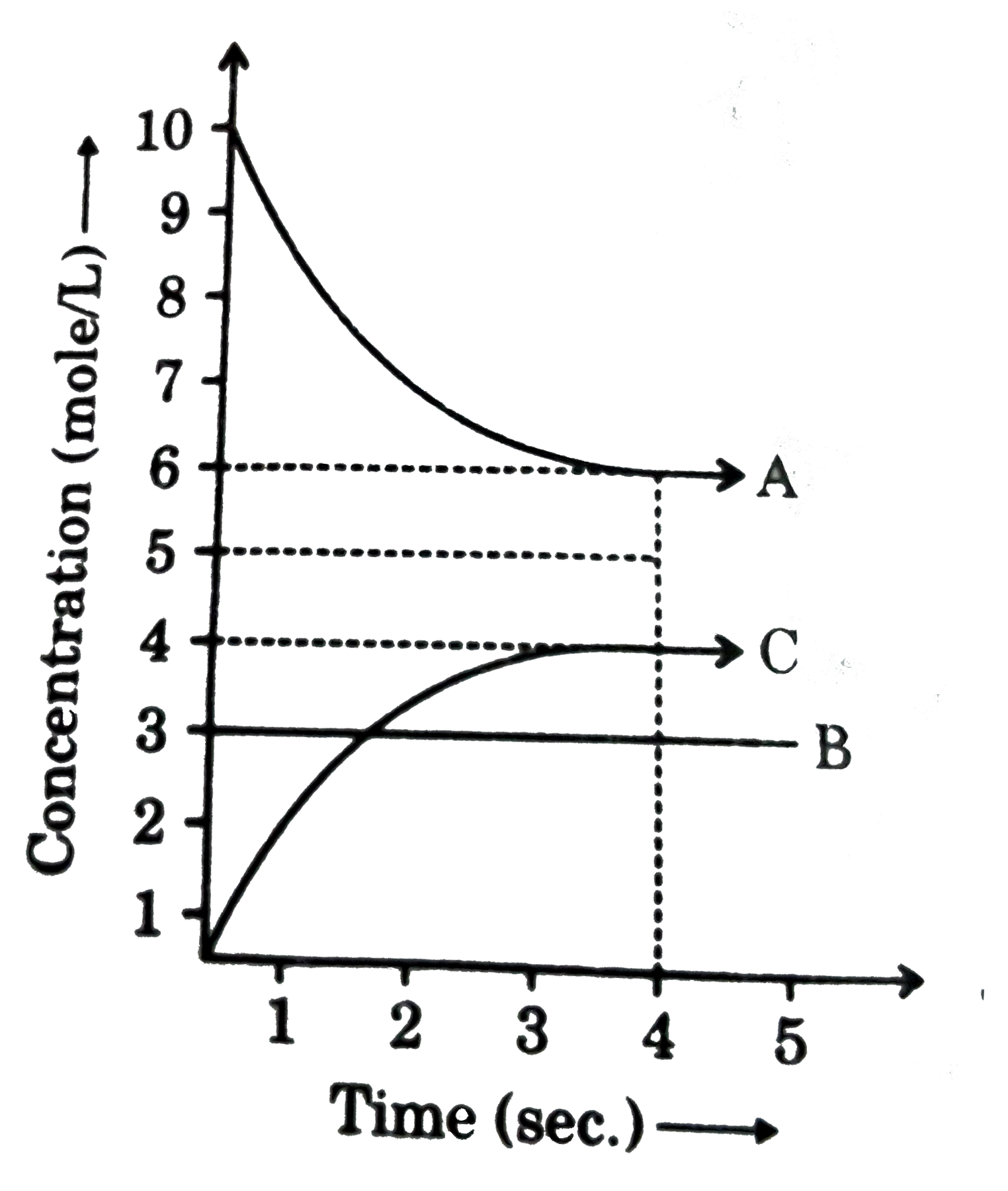A,B and C react in the 1:1:1 stoichiometric ratio. The concentration of A,B and C where found to vary with time as shown in the figure below:

The value of equilibrium repreasented in above sketch will be :
127
23
2
29
The correct Answer is:B
Step by step video, text & image solution for A,B and C react in the 1:1:1 stoichiometric ratio. The concentration of A,B and C where found to vary with time as shown in the figure below: The value of equilibrium repreasented in above sketch will be : by Chemistry experts to help you in doubts & scoring excellent marks in Class 12 exams.
Updated on:21/07/2023Topper's Solved these Questions
- GRAPHICAL INTERPRETATIONBook:GRB PUBLICATIONChapter:GRAPHICAL INTERPRETATIONExercise:Comprehension 2
Explore 1 Video
- GRAPHICAL INTERPRETATIONBook:GRB PUBLICATIONChapter:GRAPHICAL INTERPRETATIONExercise:Comprehension 3
Explore 1 Video
- GRAPHICAL INTERPRETATIONBook:GRB PUBLICATIONChapter:GRAPHICAL INTERPRETATIONExercise:Comprehension 1
Explore 1 Video
- F-BLOCK ELEMENTSBook:GRB PUBLICATIONChapter:F-BLOCK ELEMENTSExercise:Subjective type
Explore 7 Videos
- HYDROCARBON (ALIPHATIC)Book:GRB PUBLICATIONChapter:HYDROCARBON (ALIPHATIC)Exercise:Previous years jee questions
Explore 28 Videos
Similar Questions
The progress of the reaction A⇔nB with time is persented in the figure given below:

Determine
a. The value of n.
b. The equilibrium constant K.
c. The initial rate of concentration of A.
View SolutionFind the constrained relation among the acceleration of blocks A, B and C for the situation shown in figure-1.97. Ratio of radii of step pulley is given as 1:2.

View Solution
Knowledge Check
A,B and C react in the 1:1:1 stoichiometric ratio. The concentration of A,B and C where found to vary with time as shown in the figure below:

Which of the following equilibrium reaction represents the correct variation of concentration with time?AC(g)+A(g)⇔B(g)BA(g)+B(g)⇔C(g)CC(g)+B(g)⇔A(g)DA(g)+B(g)⇔C(g)X, Y and Z react in the 1:1:1 stoichiometric ratio.
The concentration of X, Y and Z we are found to vary with time as shown in the figure below:

The value of the equilibrium constant (Kc) for the equilibrium represented the in above sketch will beA92B114C23D107X, Y and Z react in the 1:1:1 stoichiometric ratio.
The concentration of X, Y and Z we are found to vary with time as shown in the figure below:

If the above equilibrium is established in a 2.0L container by taking reactants in sufficient amount then how many moles of components Y must have reacted to establish the equilibrium?A0B6C12D8
X, Y and Z react in the 1:1:1 stoichiometric ratio.
The concentration of X, Y and Z we are found to vary with time as shown in the figure below:

Which of the following equilibrium reaction represents the correct variation of concentration with time?
View SolutionIn a 1st order reaction, reactant concentration C varies with time t as:
View SolutionIn a 1st order reaction, reactant concentration C varies with time t as:
View SolutionIn a 1st order reaction, reactant concentration C varies with times t as:
View SolutionFor the reaction,
A+B⇔2C
KC=1. If the initial concentration of A,B and C are 1m, 1m and 2m respectively then, at equilibrium.
View Solution

